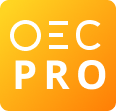Bangladesh-Ethiopia Trade: In 2023, Bangladesh exported $4.24M to Ethiopia. The main products that Bangladesh exported to Ethiopia were Packaged Medicaments ($862k), Jute Yarn ($688k), and Non-Knit Men's Suits ($447k). Over the past 5 years the exports of Bangladesh to Ethiopia have decreased at an annualized rate of 20.7%, from $13.5M in 2018 to $4.24M in 2023.
In 2023, Bangladesh did not export any services to Ethiopia.
Ethiopia-Bangladesh Trade: In 2023, Ethiopia exported $3.02M to Bangladesh. The main products that Ethiopia exported to Bangladesh were Light Mixed Woven Cotton ($2.76M), Spices ($148k), and Cotton Waste ($60.6k). Over the past 5 years the exports of Ethiopia to Bangladesh have decreased at an annualized rate of 0.16%, from $3.05M in 2018 to $3.02M in 2023.
In 2023, Ethiopia did not export any services to Bangladesh.
Comparison: In 2023, Bangladesh ranked 113 in the Economic Complexity Index (ECI -1.03), and 55 in total exports ($54.5B). That same year, Ethiopia ranked 101 in the Economic Complexity Index (ECI -0.84), and 137 in total exports ($3.97B).

